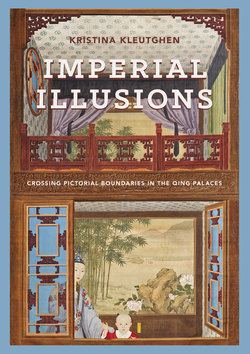Читать книгу Imperial Illusions - Kristina Kleutghen - Страница 49
На сайте Литреса книга снята с продажи.
Оглавление1.5Giulio Aleni, S.J., “Washing the Feet of the Disciples at the Last Supper.” From Illustrated Explanation of the Incarnation of the Lord of Heaven, 1637, fol. 22 (seq. 45). Woodblock print. Houghton Library, Harvard University, 52-1049.
were unfamiliar with the Christian texts and generally uninterested in conversion. It has been argued that Jesuit mission images can be broken down into “the semiotics of the subject matter and the semiotics of technique,”51 but there is neither visual nor textual evidence that content was separated from style in the minds of the Chinese viewers. On the contrary, the presence of four Christian images (provided by Ricci) in Cheng Dayue’s (1541–1616?) sale catalogue of ink-cake designs, The Ink Garden of Master Cheng (Chengshi moyuan, 1605 and 1610), demonstrates that interest in Western images lay in the innovation and exoticism of such works.52 Early seventeenth-century China was a “culture of curiosities,” in which European pictures were only one of many exotic options available to entrepreneurs seeking commercially successful images that would appeal to the general interest in novelty, which often privileged the foreign.53 There is some evidence that German and Flemish prints, particularly maps and cityscapes, may have been the most influential in providing new ideas for paintings. Pictorial devices from
